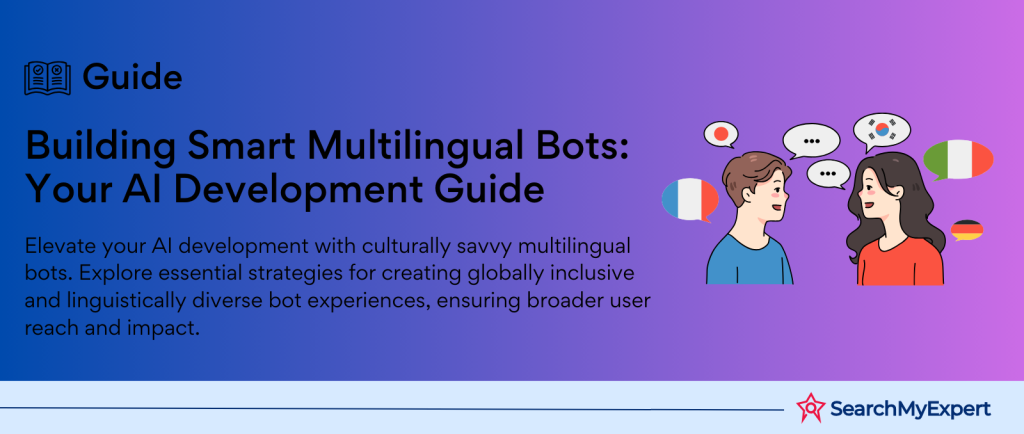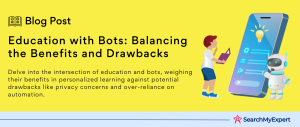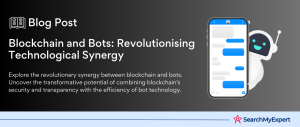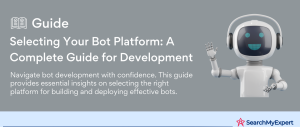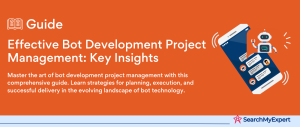Multilingual Bot Development: Bridging Communication Gaps
Unleashing the Power of Language: The Rise of Multilingual Bots
In the realm of digital interaction, multilingual bots stand as a testament to technological evolution. Picture a chatbot, seamlessly switching tongues, chatting away in English, then Spanish, maybe Mandarin, all with the ease of a global polyglot. These aren’t just programmed machines; they’re digital ambassadors of language, built to converse, understand, and assist in a multitude of languages.
The Essence of Multilingual Bots
Multilingual bots are more than mere chatbots. They’re linguistic chameleons, morphing their language to match the user’s preference. Their purpose? Simple yet profound – to demolish language barriers and make digital services universally accessible. Whether it’s customer service, information dissemination, or online assistance, these bots are equipped to handle it all, in not just one but multiple languages.
Globalization Calls for Multilingual Solutions
We live in a world that’s shrinking. Not literally, of course, but metaphorically, thanks to the ever-tightening web of global connectivity. Businesses, big and small, are stepping onto the global stage, facing an audience as diverse as humanity itself. Here, language emerges not just as a tool, but a necessity. Multilingual bots are the answer to this call, facilitating smooth, barrier-free interactions across different cultures and countries.
The Many Benefits: Satisfaction, Access, and Reach
Imagine a world where your queries are understood and answered, regardless of the language you speak. That’s the world multilingual bots are creating. Their benefits are manifold:
- Customer Delight:
Language is comfort. When customers interact in their native language, satisfaction skyrockets. - Universal Access: Information should have no language barriers. Multilingual bots ensure that it doesn’t.
- Market Expansion: New markets emerge when language barriers fall. These bots are the key to unlocking global market potential.
Understanding Natural Language Processing (NLP)
The Linguistic Brain of Bots: NLP at Work
Navigating the Maze of Human Language with NLP
At the heart of every multilingual bot lies Natural Language Processing (NLP), a field of artificial intelligence that’s all about machines understanding, interpreting, and responding to human language. Think of NLP as the linguistic brain of bots, enabling them to not just hear words but comprehend their context and nuances in different languages.
Key NLP Components in Multilingual Bots
- Tokenization: It’s like breaking down a sentence into individual words or phrases, helping bots grasp the basic structure of language.
- Stemming and Lemmatization:
These techniques refine words to their base or root form, aiding in understanding variations in language use. - Language Detection:
The starting point for multilingual bots, where they identify which language the user is speaking.
The Challenges: Not All Languages Play by the Same Rules
NLP sounds straightforward until you throw in the complexities of real-world languages. Every language dances to its own rhythm, with unique grammar, slang, idioms, and cultural nuances. This diversity is both fascinating and challenging:
- Grammar Gymnastics:
From the rigid structure of German to the fluidity of Spanish, each language bends the rules of grammar in its own way. - Slang and Colloquialisms: Street talk and trendy phrases can throw bots off course, making understanding casual conversations a tricky task.
- Cultural References:
Expressions tied to culture can be a minefield for bots, requiring not just translation, but also cultural understanding.
Choosing a Multilingual Bot Development Platform
Selecting the Right Platform: A Crucial Step in Multilingual Bot Creation
A World of Platforms: Diverse Options for Diverse Needs
In the quest to build an efficient multilingual bot, choosing the right development platform is a pivotal decision. These platforms vary in features, capabilities, and the level of expertise required. Broadly, they fall into three categories:
- Low-Code Platforms: User-friendly, ideal for beginners or businesses seeking quick deployment.
- Customizable Platforms:
Offer more flexibility and are suited for complex bot functionalities. - Enterprise-Level Platforms:
Feature-rich, designed for large-scale, sophisticated bot applications.
Key Considerations in Platform Selection
- Supported Languages: A wide language range is non-negotiable for multilingual bots.
- NLP Capabilities:
Strong NLP features ensure better understanding and response accuracy. - Ease of Use: Look for user-friendly interfaces and minimal coding requirements.
- Integration Options: Seamless integration with existing systems and third-party apps is crucial.
Spotlight on Popular Multilingual Bot Development Platforms
- Rasa:
An open-source platform known for its strong NLP capabilities and flexibility, perfect for custom, sophisticated bot solutions. - Dialogflow by Google:
Offers extensive language support and is renowned for its ease of use, making it a go-to for many developers. - Microsoft Bot Framework:
A comprehensive enterprise solution offering robust features, including excellent NLP and integration capabilities.
Building a Multilingual Bot
Crafting a Conversational Maestro: The Art of Building Multilingual Bots
Guide to Creating Linguistically Versatile Bots
Building a multilingual bot is like orchestrating a symphony in multiple languages. It demands precision, creativity, and a deep understanding of linguistic nuances. Let’s break down this complex process into manageable steps:
Define the Bot’s Purpose and Audience
- Purpose:
Start by pinpointing what your bot needs to do. Is it for customer service, sales, information dissemination? - Target Audience: Who will chat with your bot? Understanding the audience’s linguistic preferences and cultural context is crucial.
Designing Multilingual Conversations
- Conversation Flow:
Map out how the bot will converse in each language, considering cultural nuances and conversational norms. - Dialogs:
Craft dialogs that feel natural and culturally relevant in each language. It’s not just translation; it’s localization.
Training with Multilingual Data
- NLP Model:
Feed your bot’s brain, the NLP model, with diverse, multilingual data. This includes text samples, common phrases, and colloquialisms from each target language. - Continuous Learning: Ensure your bot can learn and adapt from ongoing interactions to refine its language skills.
Testing and Refinement
- Performance Testing:
Test your bot rigorously in each language. Ensure it understands queries correctly and responds appropriately. - Refinement: Based on testing feedback, refine the bot’s responses, conversation flow, and even NLP model for better accuracy and cultural relevance.
Localization and Cultural Considerations
Fine-Tuning Your Bot for a Global Stage
Beyond Translation: Embracing Cultural Nuances in Bot Conversations
Creating a multilingual bot isn’t just about speaking different languages. It’s about understanding and respecting the rich tapestry of cultural differences that come with them. This step is crucial in making your bot not only linguistically adept but also culturally competent.
The Art of Localization in Bot Development
- Tailored Language: It’s not just what you say, but how you say it. Adapting the bot’s language to fit cultural norms is essential.
- Appropriate Greetings: From a cheerful “¡Hola!” in Spanish to a respectful “こんにちは” (Konnichiwa) in Japanese, greeting styles matter.
- Humor and References: What’s funny in one culture might be offensive in another. Similarly, cultural references should resonate with the local audience.
Cultural Sensitivity: The Key to Global Harmony
- Avoiding Misunderstandings:
Misinterpretations can lead to confusion or offense. Training your bot to recognize and navigate cultural sensitivities is paramount. - Regular Updates:
Cultural norms evolve. Keeping your bot’s content and responses up-to-date is a continuous process.
Deployment and Maintenance
Launching and Sustaining Your Multilingual Bot: A Continuous Journey
Choosing the Right Platform for Your Bot
Deploying a multilingual bot is a strategic decision that hinges on where your audience is. Let’s explore the common deployment platforms:
- Web:
Ideal for customer support on websites. - Mobile Apps:
Perfect for on-the-go user engagement. - Messaging Platforms:
Such as WhatsApp or Facebook Messenger, reaching users where they already are.
Ongoing Maintenance: Keeping Your Bot in Top Shape
NLP Model Updates
- Feeding New Data: Regularly update the NLP model with new language data to keep up with evolving language trends.
- Adjusting for Accuracy:
Refine the model for better understanding and responses in all supported languages.
Monitoring Bot Performance
- Performance Metrics:
Track how well your bot is understanding and responding in different languages. - Issue Resolution: Quickly address any technical or linguistic issues that arise.
The Power of User Feedback
- Collecting Insights:
Regular user feedback is gold. It helps in understanding what’s working and what’s not. - Iterative Improvements:
Use feedback to make your bot more user-friendly, culturally attuned, and effective.
The Future of Multilingual Bot Development
Peering into the Crystal Ball: The Next Frontier in Bot Technology
The Ever-Evolving Landscape of NLP and Its Impact on Bots
As we gaze into the future of multilingual bots, it’s clear that advancements in Natural Language Processing (NLP) are set to revolutionize the way bots understand and interact in multiple languages.
Emerging Trends in NLP
- Sophisticated Machine Translation:
Expect leaps in accuracy and context understanding, breaking down language barriers even further. - Advanced Sentiment Analysis:
Bots will not just understand words, but also the emotions behind them, leading to more empathetic interactions. - Hyper-Personalization:
Future bots will tailor conversations based on individual user preferences and histories, making interactions deeply personal.
Transformative Applications Across Industries
- Healthcare: Multilingual bots could provide medical information and support in diverse languages, making healthcare more accessible.
- Education: Imagine personalized language learning assistants, capable of teaching and conversing in multiple languages.
- Customer Service:
With improved NLP, bots will handle complex customer queries across different languages, enhancing global customer experiences.
Conclusion
The future of multilingual bots is not just about technology; it’s about creating a world where language is no longer a barrier but a bridge connecting people across the globe.
Forge ahead with innovative Bot Development Service Firms.
Table of Contents
Toggle
